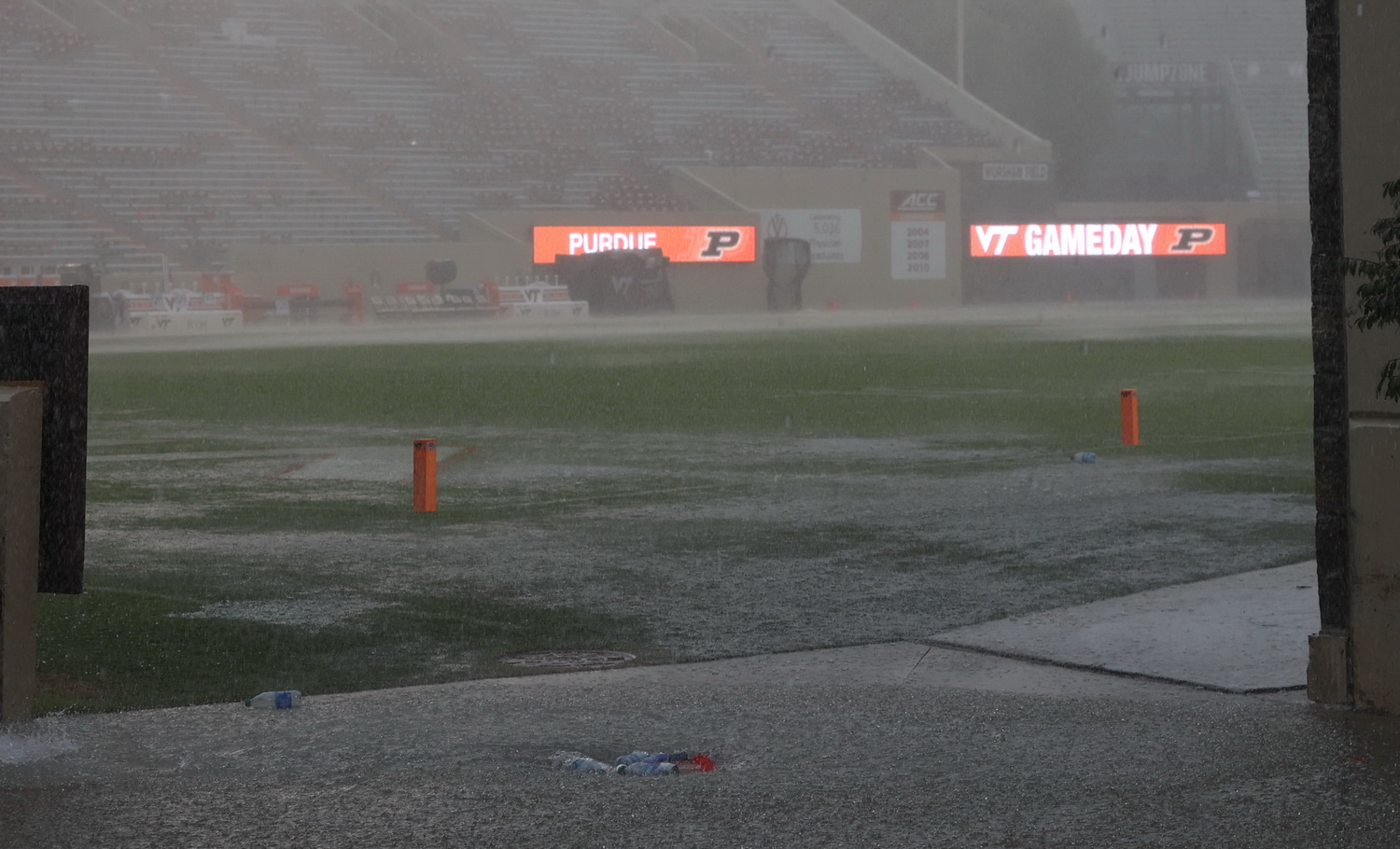
By Marty Gordon
Lightning and heavy rain delayed the completion of Saturday’s Virginia Tech-Purdue for over five hours.
The biggest logistic of the suspension was convincing a sellout crowd to leave the stadium. For the first hour, most of those fans hung out under the stadium in the concession area. After that time, many found their way back to parking lot to their cars. This, in turn, led to a large majority of the fans simply leaving.
Many Hokie fans remember the 2001 nationally-broadcast game between Virginia Tech and Georgia Tech. Television announcers watched as lightning struck near one of their cars. The game would be cancelled because of the severe weather and become infamous in Hokie football history.
The Michigan State-Penn State contest in 2017 was subjected to a weather delay, which lasted for 6 hours and 58 minutes. Another 110-minute halt occurred in 2016’s tie between Wyoming and Northern Illinois.
The NCAA policy is pretty straight forward and similar to the Virginia High School League.
“Once lightning enters the warning ring, you must stop competition and move student-athletes and spectators to safe areas. You may not begin any activity until 30 minutes have passed since the last lightning strike inside the warning ring. Lightning strikes will disappear from the screen once they are 30 minutes old.”
The Lightning and addition rain, which seemed to be blowing sideways, shut down the competition even longer, in the case of Saturday’s game, over five hours.
According to a NCAA report, lightning is the most consistent and significant weather hazard that may affect intercollegiate athletics.
Within the United States, the National Severe Storms Laboratory (NSSL) estimates that 100 fatalities and 400-500 injuries requiring medical treatment occur from lightning strikes every year.
Virginia Tech has and had staff on Saturday watching the warning area and the National Weather Service radar.
Typically, the system will alert staff lightning has been recorded in the outside ring nearly 18 miles away. Once, it reaches the 10-mile range, staff receive additional alerts. In addition, every time another strike was recorded within that range, the 30-minute delay restarts.
The NCAA points out that outside locations increase the risk of being struck by lightning when thunderstorms are in the area. Typically, anything referred to as a “shelter” is not safe from lightning. Dugouts, refreshment stands, open press boxes, rain shelters, golf shelters and picnic shelters, even if they are properly grounded for structural safety, are unsafe and may actually increase the risk of lightning injury.
Tech officials made announcements telling those fans who were under the concourse of the stadium more “safer” locations were available. This included Cassell Coliseum and the Rector Field House. Staff and fans were quickly moved to those locations.
According to the NCAA rules, a non-conference game like the Virginia Tech-Purdue game could have been cancelled if the weather did not clear. Instead, at around 6:15 p.m., teams were back on the field.
Fans re-entered the stadium, but many had gone home. The Hokie faithful had decreased in an estimated half from the initial sellout crowd.



